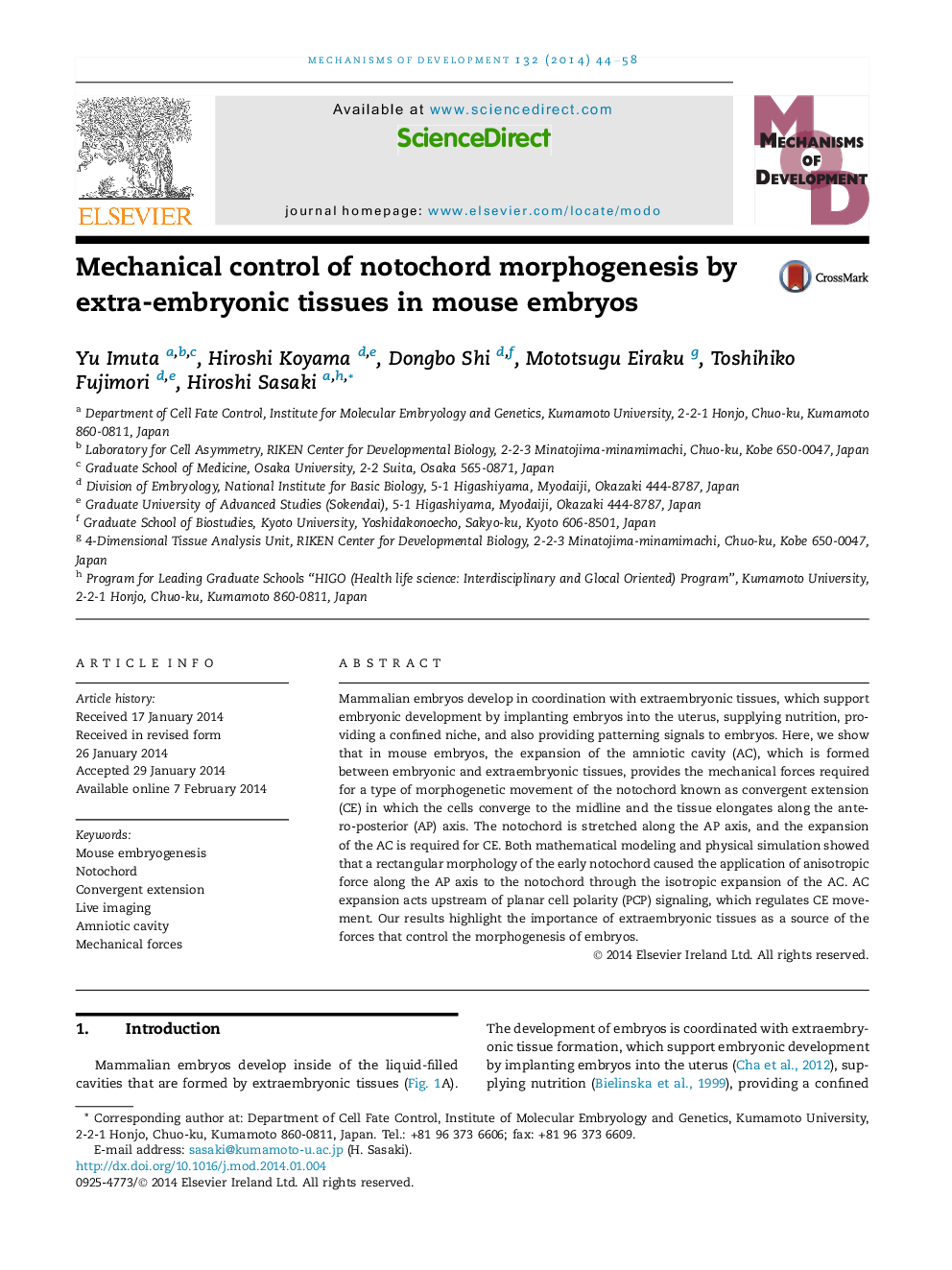| Article ID | Journal | Published Year | Pages | File Type |
|---|---|---|---|---|
| 2194560 | Mechanisms of Development | 2014 | 15 Pages |
•Mouse notochord is stretched along antero-posterior axis in convergent extension.•Expansion of amniotic cavity (AC) is required for convergent extension.•Morphology of the notochord causes application of anisotropic tension.•AC expansion is required for membrane accumulation of a PCP protein, Vangl2.
Mammalian embryos develop in coordination with extraembryonic tissues, which support embryonic development by implanting embryos into the uterus, supplying nutrition, providing a confined niche, and also providing patterning signals to embryos. Here, we show that in mouse embryos, the expansion of the amniotic cavity (AC), which is formed between embryonic and extraembryonic tissues, provides the mechanical forces required for a type of morphogenetic movement of the notochord known as convergent extension (CE) in which the cells converge to the midline and the tissue elongates along the antero-posterior (AP) axis. The notochord is stretched along the AP axis, and the expansion of the AC is required for CE. Both mathematical modeling and physical simulation showed that a rectangular morphology of the early notochord caused the application of anisotropic force along the AP axis to the notochord through the isotropic expansion of the AC. AC expansion acts upstream of planar cell polarity (PCP) signaling, which regulates CE movement. Our results highlight the importance of extraembryonic tissues as a source of the forces that control the morphogenesis of embryos.
Graphical abstractFigure optionsDownload full-size imageDownload high-quality image (123 K)Download as PowerPoint slide
